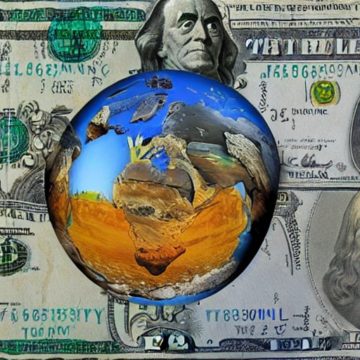 Daniel Driscoll in Phenomenal World’s Polycrisis (image credit: Stable Diffusion):
Daniel Driscoll in Phenomenal World’s Polycrisis (image credit: Stable Diffusion):
Amidst the turbulence of the Second World War, hundreds of delegates from the Allied Nations met in Bretton Woods, New Hampshire to construct a post-war economic system. While it might strike one as odd that post-war choreography began in 1944, a year before the war ended, the truth is that states were planning peacetime from the moment the war began. The West feared replicating the blunders of the Treaty of Versailles and wanted to establish the next post-war order with prudence.1 One principal task for Bretton Woods attendees was to implement an international monetary system. Several proposals existed, including Keynes’ Bancor, which would have established an International Clearing Union to issue a supranational currency, oversee currency exchanges, and correct global imbalances. The war had weakened Europe, however, and strengthened the US. US negotiators exploited their influence. While the adoption of the dollar as the global reserve asset would hand the US a significant upper hand, Europeans eventually relented because they could still convert dollars to gold and were assured that the arrangement was temporary.
Twenty-seven years later, a new crisis fractured the postwar economic peace enjoyed by the West. Rising inflation drove many countries, particularly European ones, to convert their US dollar reserves into gold. President Richard Nixon faced a choice between devaluing the dollar or pumping it up through perilous austerity measures. Global markets predicted that Nixon’s political savvy would drive him toward the former, but he shocked the world by taking a surprise third route, severing the dollar from the gold standard. There is a great deal of disagreement as to his decision’s long-term ramifications, but little debate about the global economic turmoil that immediately followed. Through it all, the dollar’s global hegemony endured, and it remains to this day.
More here.
